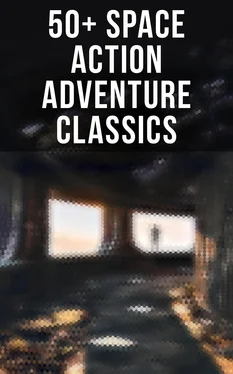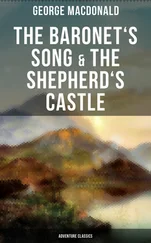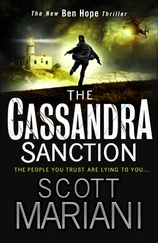Faber speaks in his studies of political psychology of the “hate map” of the world. The intensity of the colouring of such a map would vary widely. The English-speaking states (except for Ireland, that erstwhile “island of evergreen malice”, which is now the most delightful and welcoming of summer resorts) and the Spanish-speaking communities felt hate far less intensely than the peoples of the continental European patchwork. They were less congested, they were free from acute alien interference, they had more space to move about in, and the infection was not so virulent. For two decades Spain and Spanish South America (after the Peruvian Settlement) sustained indeed a more liberal and creative mentality than any other region of the world. The Spanish contribution, beginning with Unamuno and Ortega y Gasset and going onward through a long list of great names, was of increasing importance in the building up of the Modern World-State.
Russia, we may note, was never so constructive mentally as Spain. She had not now the same wealth of freely thinking and writing men. She had no surplus of mental energy to philosophize. She ecstasized, prophesied or dogmatized. Such brain discipline as she had was used up in her sprawling technical efforts. But she again was not a malignant country. Young Russia was taught to hate indeed, but to hate a dissolving enemy, the Wicked Imperialist. Even in that hate there was an element of humorous caricature. When in due course the Wicked Imperialist faded away to the quality of a nursery Ogre, he took with him most of the hatred out of Russia. Hate, except in brief vivid spurts, does not seem congenial to the Russian temperament.
Few people in 1940 realized that the essential political trouble in the world, as distinguished from its monetary malaise, was this endemic disease, and still fewer had the boldness of mind even to think of the drastic cleansing and destruction of infected social institutions and economic interests and accumulations that was needed if the disease was ever to be stamped out. Meanwhile along the tangled frontiers of Central and Eastern Europe the sores festered and the inflammation increased.
Among the more frequent methods of releasing hatred in the more troubled communities were aggressive demonstrations inviting or involving violence, attacks on representative buildings, such as embassies and consulates, the defilement of flags, statues and other symbols (in India the slaughter of sacred or forbidden animals such as cows or pigs in holy places), quarrels picked in cafés and restaurants, beatings-up, assassinations, the throwing of bombs and crackers into parties and gatherings of the objectionable nationality, or into law courts, religious buildings and other unsuitable places for an explosion, firing at sentinels and across boundaries. Along the Adriatic coast it would appear there was an exceptionally strong disposition to insult the characteristic Italian respect for statues and pictures.
This was of recent origin. At the Congress of Versailles Italy had been bilked by her French and British Allies of a considerable amount of the Dalmatian coast-line — to which indeed neither she nor they had any right, but which nevertheless had been promised to her in the secret engagements that had brought her into the World War. Her patriots had never ceased to resent this broken promise, nor the Jugo-Slav peoples, who held the coveted districts, to fear a forcible annexation. There had been much propaganda about the dispute. One prominent argument on the Italian side was that the Republic of Venice (of which Rome was the natural heir) had formerly dominated this coast, and, in proof of this, appeal was made to the public buildings in the towns of the disputed regions, which everywhere bore the insignia of their Italian founders and particularly the distinctive lion of Venice. For that was the Fascist fantasy: wherever the Venetian lion had made its lair or the Roman eagles cast their shadows, from Hadrian’s Wall in England to Mesopotamia, the Fascisti claimed to rule.
This contention, though taken calmly enough by the English, French, Spanish, Turks and other emancipated peoples, was bitterly resented by the populations more immediately threatened, and particularly did it arouse resentment and hatred along the Dalmatian coast. For the young and excitable Slav, those sculptured lions and archaic eagles, those antique vestiges, were robbed of their artistic and historical charm; they took on an arrogant contemporary quality and seemed to demand an answer to their challenge. His response was to deface or mutilate them.
Already in 1932 there were bitter recriminations between Rome and Belgrade on this score, and in 1935 and again in 1937 fresh trouble arose. The later occasions were not simply matters of chipping and breaking. These heraldic and highly symbolic animals were now painted, and painted in such a manner as to bring them into grave contempt. And the outrages were not confined to heraldic animals. Portraits and images of Mussolini were also adorned all too often with pencilled moustaches, formidable whiskers, a red nose and other perversions of his vigorous personality.
Such vexatious modes of expression were in constant evidence in all the inflamed areas. To us they seem trivial, imbecile, preposterous, but then they were steeped in tragic possibility.
The reader must picture for himself, if he can, how things went in the brain of some youngster growing to manhood in one of these hate regions, the constant irritation of restrictions, the constant urge to do some vivid expressive thing, the bitter, unconsoling mockery against the oppressor, and at last the pitiful conspiracy, the still more pitiful insult. He must think of the poor excitement of getting the paint-pot and the ladder, of watching the receding police patrol, the tremulous triumph of smearing the hated object. That perhaps was the poor crown of life for that particular brain. Then the alarm, the conflict, the flight, a shot, a wound, straw and filth in a prison cell, the beatings and the formal punishment, the intensified resolve to carry on the resistance. There was nothing to think of then but the next outrage, the next riot. So very often the story went on to wounds and death, the body crumpled up on a street pavement and trampled under foot or put against a wall to be shot, and then the rotting away and dispersal of that particular human brain with all the gifts and powers it possessed. That was all that life could be for hundreds of thousands of those hate-drenched brains. For that they came into being, like flowers that open in a rain of filth.
A Natural History of Cruelty has recently been published by Otto Jaspers (2085 — ), a lineal descendant of that Professor Jaspers of Heidelberg University under whom De Windt studied and to whose Die geistiger Situation der Gegenwart De Windt was greatly indebted. Cruelty in the Twentieth Century is treated in considerable detail, and it makes very terrible reading indeed. Happily it is not considered a necessary part of a general education to probe under those dark processes of the human mind which make the infliction of horrible pain and injuries a relief to otherwise intolerable mental distresses. The psychologist, however, must acquaint himself with all those facts; he cannot fully understand our intricate minds without them, and the practical disappearance of deliberate cruelty from our world to-day makes the horror literature of the World War and World Slump periods a mine of essential material for his investigations. One or two glimpses we have given the student. If he has any imagination he will be able to expand those hints for himself into an infinitude of mutilations, tortures and wanton violence.
The older psychologists were disposed to classify cruelty as a form of sexual aberration — in ordinary speech we still use their old word Sadistic — but this attribution is no longer respected by contemporary authorities. Cruelty goes far beyond the sexual field. Just as hate is now understood to be a combative fear compound, the stiffening up of a faltering challenge, which may become infectious, so cruelty is regarded as a natural development of effort against resistance, so soon as the apprehension of frustration exceeds a certain limit. It is a transformation of our attempt to subdue something, usually a living thing, to our will, under the exasperation of actual or anticipated obduracy.
Читать дальше











